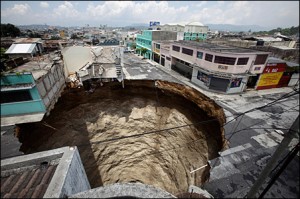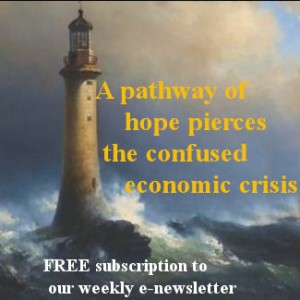 The first warning was pretty clear.
The first warning was pretty clear.
Back in May, a group of central bankers and financial analysts met together in Basel, Switzerland and issued a report on the dire state of the world economy. The 2014 annual report of the Bank of International Settlements then claimed that the present climate is as fragile and volatile as it was during the Lehman Brothers crisis in 2007.
Read the popular article: We Must Resist the Temptation to Secession
Now in September, a no less impressive group of seventy central-bank officials and other monetary experts met in Geneva and issued their own report under the auspices of the International Centre for Monetary and Banking Studies (ICMB). Their message: Something is dreadfully wrong with the way we are dealing with the crisis. The measures being taken to bolster the present, toothless “recovery” are not working.
The very title of the new warning is telltale if not a bit cynical: “Deleveraging, What Deleveraging?” The report claims the logical reaction to any kind of crisis like the 2008 subprime mortgage crisis would be to “deleverage” or radically shed debts. While American households had the good sense to temporarily shed debt (it is now back where it once was at $12 trillion), most governments have not done so. In fact, the report shows that global debt, excluding the financial sector, just keeps on growing, rising some 36% since 2008 to a record 212% of GDP.
The underlying logic behind the policies criticized is an exaggerated fear of deflation. In typical Keynesian fashion, policy makers are actually crafting their actions to provoke higher inflation. They reason that higher debt is easier paid with less valuable dollars and that consumers will spend more now if they perceive higher prices later.
Central bankers have actually tried to induce inflation by pumping money into the economy with measures like the Fed’s  quantitative easing (QE). Indeed, just when it seemed that the Fed would end the money pumping that keeps the debt party going, Japan has recently announced its own quantitative easing program that takes the baton from the Fed and keeps the global dollars flowing. European backers also are offering their own version of QE as a “stimulus.” At the same time, interest rates are kept artificially low to keep money circulating without restrictions.
quantitative easing (QE). Indeed, just when it seemed that the Fed would end the money pumping that keeps the debt party going, Japan has recently announced its own quantitative easing program that takes the baton from the Fed and keeps the global dollars flowing. European backers also are offering their own version of QE as a “stimulus.” At the same time, interest rates are kept artificially low to keep money circulating without restrictions.
The bankers’ report notes that the money-pumping policy has failed to live up to expectations. It has neither induced inflation (which they see as a positive factor!) nor led to fast growth. Instead, modern economies are plagued by a “poisonous combination” of rising debt and slow growth, imperiling the global economic scene. This complicates “deleveraging” and encourages expanding debt.
Moreover, artificially suppressed interest rates add to the problem since they discourage savings, inhibit capital formation and lead to bargain borrowing. Without proportional growth, such misguided measures greatly increase the burden of debt service in the future.
It is no surprise that governments are major contributors to expanding debt. The American public debt ratio alone has climbed 40 percentage points to 105% of GDP since 2008. When governments maintain high debt levels, it increases the vulnerability to financial crises and gives rise to unrealistic hopes of government bailouts.
Nor is America alone in amassing debt. The report reveals that the same debt overload that provoked the 2008 crisis in developed counties has now appeared in emerging countries which “remain extremely vulnerable.” Early signs of the next financial crisis are “already visible this time around in some emerging economies and especially in China.”
 The Geneva report reflects a growing anxiety among central bankers who are deeply divided over what to do about policies that have yielded so few good results. The report suggests no concrete plan beyond the wishful thinking that a crisis might still take some time to happen.
The Geneva report reflects a growing anxiety among central bankers who are deeply divided over what to do about policies that have yielded so few good results. The report suggests no concrete plan beyond the wishful thinking that a crisis might still take some time to happen.
However, experience has shown that an economy cannot be regulated, legislated and stimulated back to order. Solutions must be found beyond the economic formulas and figures, outside the Keynesian playbook. It is not only the financial and banking officials that are at fault, but a whole frenzied economy that reflects the present policies. What is needed is moral restraint and common sense on all levels of the markets to combat what might be called the “frenetic intemperance” of the times.
A second warning has been issued. Can the world afford to wait for more?


